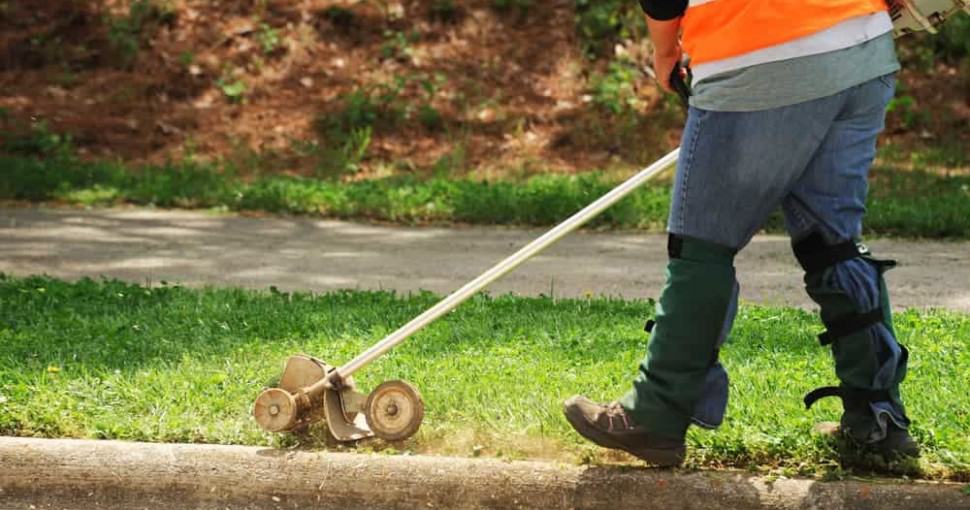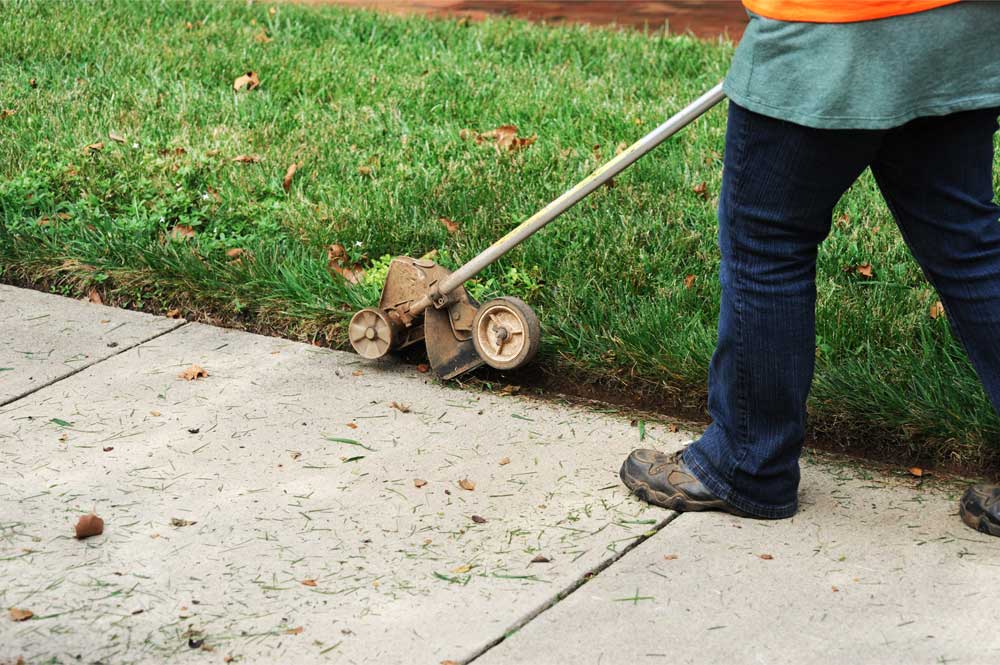Why Edging is Crucial for a Well-Manicured Lawn
Edging is a crucial aspect of lawn care that can greatly impact the overall appearance and health of your outdoor space. By creating a clear distinction between your lawn and surrounding features, edging helps to prevent weeds from encroaching on your grass, reducing the need for herbicides and other chemicals. This, in turn, can lead to a healthier and more sustainable lawn. Additionally, edging can improve curb appeal, making your outdoor space more inviting and increasing your property’s value. To achieve a beautifully manicured lawn, it’s essential to understand the importance of edging and learn how to use an edger lawn effectively. In this article, we’ll delve into the world of lawn edging, providing you with a comprehensive guide on how to use an edger lawn to achieve professional-grade results.
Choosing the Right Edger for Your Lawn
Selecting the right edger for your lawn is crucial to achieving professional-grade results. With various types of edgers available, it’s essential to consider your lawn size, type, and personal preferences when making a decision. Gas-powered edgers are ideal for large lawns and offer more power, while electric edgers are suitable for smaller lawns and are environmentally friendly. Manual edgers, on the other hand, are perfect for small to medium-sized lawns and provide a cost-effective solution. When choosing an edger, consider the blade type, handle material, and weight distribution. A good edger should be comfortable to use, easy to maneuver, and provide a clean cut. By selecting the right edger for your lawn, you’ll be well on your way to learning how to use an edger lawn effectively and achieving a beautifully manicured outdoor space.
Preparing Your Lawn for Edging
Before learning how to use an edger lawn, it’s essential to prepare your lawn for edging. This crucial step ensures a smooth and efficient edging process, resulting in a beautifully manicured lawn. Start by mowing your lawn to the recommended height for your grass type. This will help the edger cut more effectively and prevent damage to the blades. Next, trim any overgrown grass or weeds around trees, gardens, and hardscapes to create a clean edge. Remove any debris, such as rocks or twigs, that could interfere with the edging process or damage the edger. Finally, inspect your lawn for any obstacles, such as sprinkler heads or underground cables, and mark them to avoid damaging them during edging. By properly preparing your lawn, you’ll be able to learn how to use an edger lawn effectively and achieve professional-grade results.
How to Use an Edger Lawn: A Step-by-Step Guide
Now that you’ve prepared your lawn for edging, it’s time to learn how to use an edger lawn effectively. Follow these steps to achieve professional-grade results:
Step 1: Start by adjusting the edger to the correct height for your lawn. This will ensure a clean cut and prevent damage to the blades.
Step 2: Hold the edger at a 45-degree angle, with the blade facing the area you want to edge. Maintain a steady pace, moving the edger in a slow and controlled motion.
Step 3: Edge around obstacles, such as trees and gardens, by using a gentle sweeping motion. This will help you maintain a clean line and prevent damage to the surrounding plants.
Step 4: Use the correct angle when edging around curves, such as sidewalks and driveways. This will help you achieve a smooth, rounded edge.
Step 5: Maintain a consistent height throughout the edging process, adjusting the edger as needed to ensure a uniform cut.
By following these steps and learning how to use an edger lawn effectively, you’ll be able to achieve a beautifully manicured lawn that will be the envy of your neighbors.
Tips and Tricks for Achieving Professional-Grade Results
To take your lawn edging to the next level, follow these expert tips and tricks:
Create clean lines by using a string or rope as a guide when edging. This will help you achieve a straight, defined edge.
Edge around curves, such as sidewalks and driveways, by using a gentle sweeping motion. This will help you maintain a smooth, rounded edge.
Maintain a consistent height throughout the edging process by adjusting the edger as needed. This will ensure a uniform cut and a professional-grade finish.
Use the correct angle when edging around obstacles, such as trees and gardens. This will help you achieve a clean, defined edge without damaging the surrounding plants.
For a more precise edge, use a edger with a adjustable blade depth. This will allow you to customize the cut to your specific lawn needs.
Remember to always follow the manufacturer’s instructions when using an edger, and take necessary safety precautions to avoid injury.
By incorporating these tips and tricks into your lawn edging routine, you’ll be able to achieve professional-grade results and take your lawn to the next level. Whether you’re a seasoned landscaper or a DIY enthusiast, learning how to use an edger lawn effectively is key to achieving a beautifully manicured lawn.
Common Mistakes to Avoid When Edging Your Lawn
When it comes to edging your lawn, there are several common mistakes to avoid in order to achieve professional-grade results. By being aware of these mistakes, you can take steps to prevent them and ensure a beautifully manicured lawn.
Uneven Lines: One of the most common mistakes when edging is creating uneven lines. This can be avoided by using a string or rope as a guide when edging, and by maintaining a steady pace.
Scalping: Scalping occurs when the edger cuts too deeply into the lawn, leaving it vulnerable to disease and pests. To avoid scalping, adjust the edger to the correct height for your lawn, and avoid applying too much pressure.
Damaging Plants: When edging around obstacles, such as trees and gardens, it’s easy to damage the surrounding plants. To avoid this, use a gentle sweeping motion when edging around curves, and take care to avoid cutting too closely to the plants.
Not Maintaining a Consistent Height: Failing to maintain a consistent height throughout the edging process can lead to an uneven, unprofessional finish. To avoid this, adjust the edger as needed to ensure a uniform cut.
Not Using the Correct Angle: Using the incorrect angle when edging can lead to uneven lines and a poor finish. To avoid this, use the correct angle when edging, and adjust as needed to achieve a clean, defined edge.
By being aware of these common mistakes, you can take steps to avoid them and achieve a beautifully manicured lawn with your edger lawn. Remember to always follow the manufacturer’s instructions when using an edger, and take necessary safety precautions to avoid injury.
Edger Lawn Maintenance and Storage
Proper maintenance and storage of your edger lawn are crucial to ensure it continues to perform optimally and lasts for a long time. By following these simple tips, you can keep your edger lawn in top condition and ensure it remains a valuable tool in your lawn care arsenal.
Cleaning: After each use, clean your edger lawn to remove any debris, grass, or dirt that may have accumulated. Use a soft brush or cloth to wipe down the edger, and avoid using harsh chemicals or abrasive materials that may damage the surface.
Sharpening: Regular sharpening of the edger blade is essential to maintain its cutting performance. Use a sharpening stone or file to sharpen the blade, and always follow the manufacturer’s instructions for sharpening and maintenance.
Storing: When not in use, store your edger lawn in a dry, protected area to prevent rust or corrosion. Hang the edger on a hook or store it in a designated area, such as a shed or garage, to keep it out of the way and prevent accidental damage.
Regular Inspection: Regularly inspect your edger lawn for any signs of wear or damage, such as loose screws, damaged blades, or worn-out handles. Addressing these issues promptly can prevent more serious problems from developing and ensure your edger lawn continues to perform optimally.
By following these simple maintenance and storage tips, you can extend the life of your edger lawn and ensure it remains a valuable tool in your lawn care arsenal. Remember to always refer to the manufacturer’s instructions for specific maintenance and storage recommendations for your particular edger lawn model.
Conclusion: Achieving a Beautifully Manicured Lawn with Edging
By now, you should have a comprehensive understanding of the importance of edging in lawn care and how to use an edger lawn to achieve professional-grade results. From choosing the right edger for your lawn to maintaining and storing it, every step plays a crucial role in creating a beautifully manicured lawn.
Remember, edging is not just about creating clean lines and defined edges; it’s also about promoting healthy lawn growth, controlling weeds, and enhancing curb appeal. By incorporating edging into your regular lawn care routine, you can take your lawn to the next level and enjoy a lush, vibrant outdoor space that’s perfect for relaxation and entertainment.
So, put your newfound knowledge into practice and start edging your way to a beautifully manicured lawn. With the right techniques, tools, and maintenance, you can achieve a lawn that’s the envy of the neighborhood. Happy edging!








